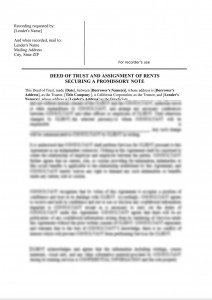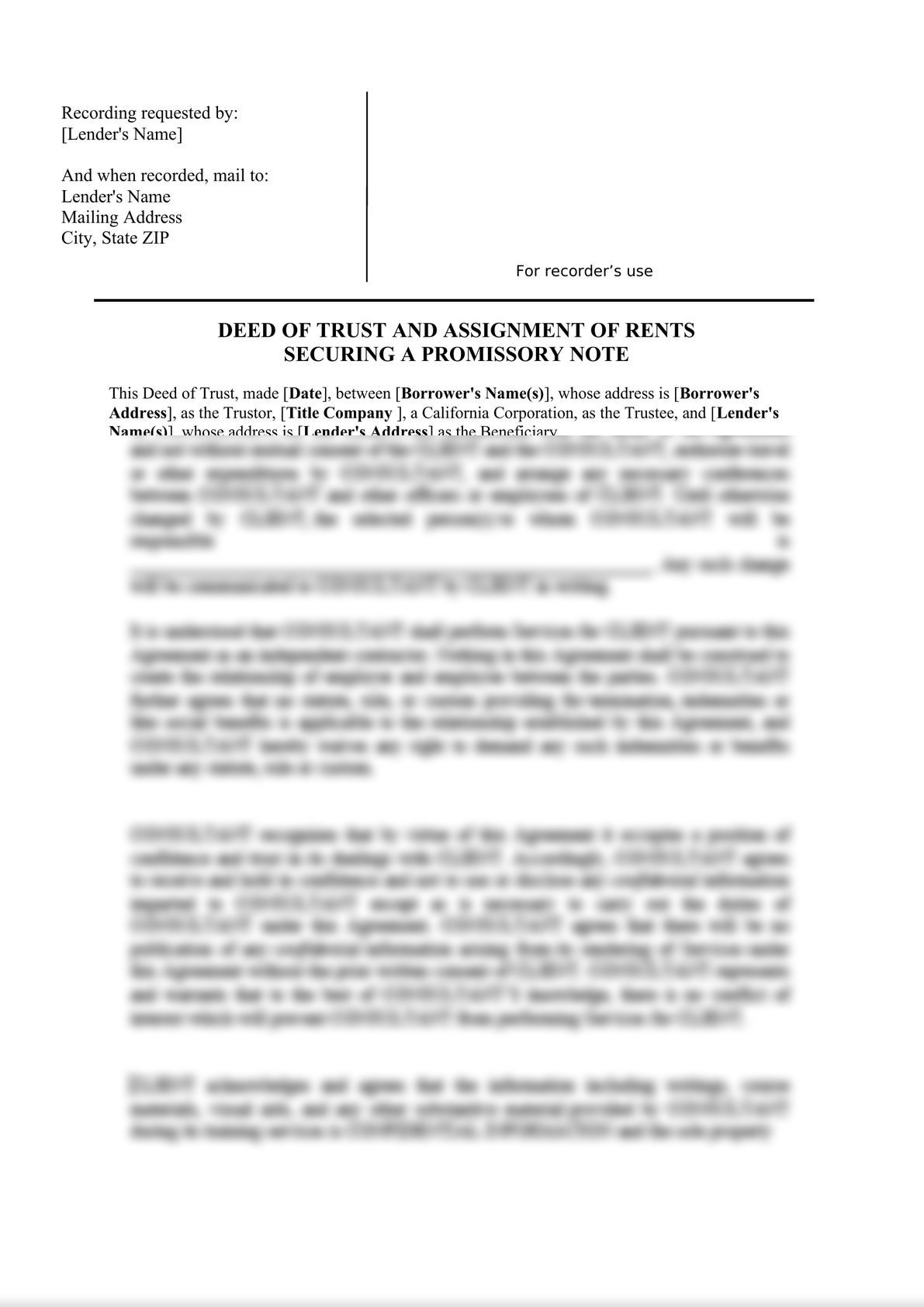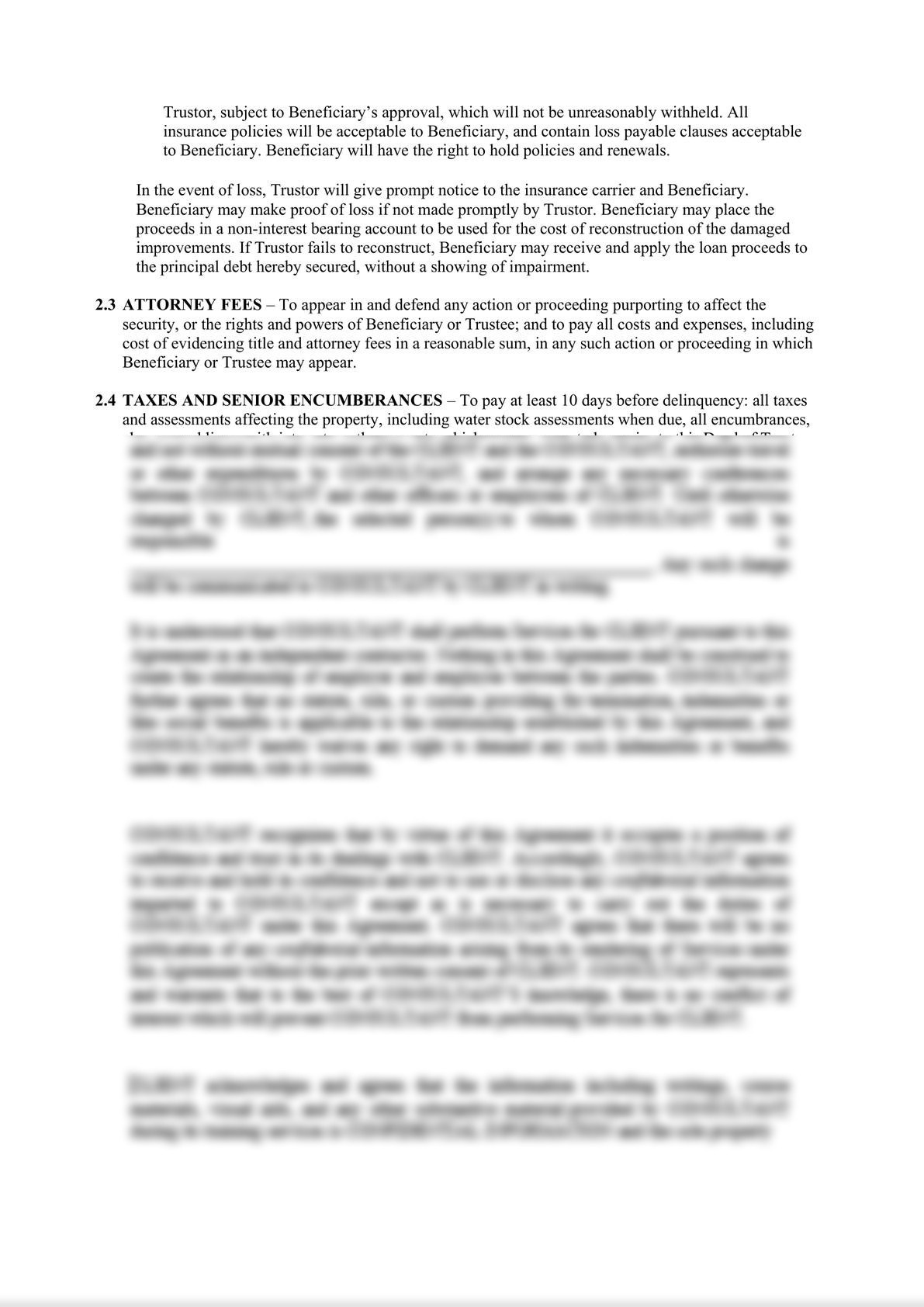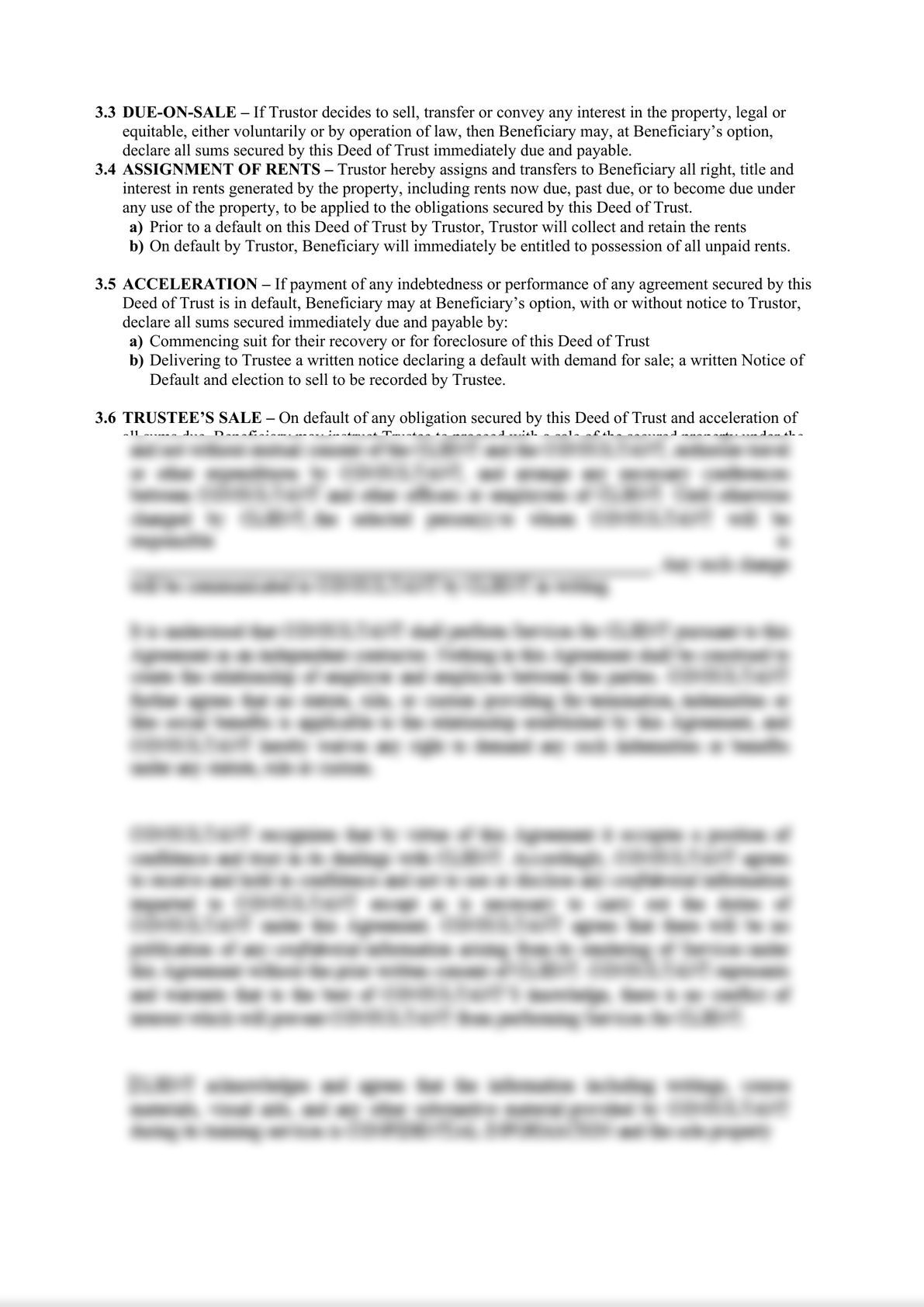Key description
- You must use this document along with the Promissory Note Secured by Deed of Trust, also on this site. A deed of trust or trust deed is like a mortgage. Rather than transferring ownership of property like a deed, a trust deed makes a piece of real property security (collateral) for a loan, like a mortgage.
- If the loan is not repaid on time, the lender can foreclose on and sell the property and use the proceeds to pay off the loan. A trust deed is always used together with a promissory note that sets out the amount and terms of the loan.
- The property owner signs the note, which is a written promise to repay the borrowed money. As long as the borrower (the property owner), which is the "trustor," makes the loan paymetns and keeps other promises in the trust deed, the lender or "trustee" has no control over the property.
- However, if the borrower defaults, however, the trustee has the power to sell the property to pay off the loan without having to file an action in court. The lender (also known as “beneficiary”) is then repaid from the proceeds
- There are 3 parties to these agreements : the beneficiary (the lender). the borrower and the trustee (which is when a bank or other financing entity financing the purchase, the trustee is usually a title or trust company, but it could be a real estate broker.
- If there are two or more borrowers, they will be borrowing the money “jointly and severally,” which means each debtor is responsible (liable) for the entire amount of the debt.
- A creditor may collect from either and the debtor who pays may demand contributions from the other debtors. ' When the property used as security for the loan is owned by more than one person, the names of all owners of the property, and their spouses, must be included to give the entire property (all owners’ interests in the property) as security.
- A co-owner can only give as security his or her interest in the property. In other words, a lender wants to be sure that all owners and their spouses sign the deed of trust as a condition of lending the money (unless the lender is willing to take as security one co-owner’s interest in property).
- Notarization is required before recording these documents with the County Recorder.
Language
Categories
Covered clausesClauses
-
2.1 CONDITION OF PROPERTY
-
2.2 HAZARD INSURANCE
-
2.3 ATTORNEY FEES
-
2.4 TAXES AND SENIOR ENCUMBERANCES
-
2.5 ACTS AND ADVANCES TO PROTECT THE SECURITY
-
3.1 ASSIGNMENT OF DAMAGES
-
3.2 WAIVER
-
3.3 DUE-ON-SALE
-
3.4 ASSIGNMENT OF RENTS
-
3.5 ACCELERATION
-
3.6 TRUSTEE’S SALE
-
3.7 TRUSTOR’S OFFSET STATEMENT
-
4. ADDENDA
-
5. RECONVEYANCE
-
6. SUCCESSORS, ASSIGNS AND PLEDGEES
-
7. TRUSTEE’S FORECLOSURE NOTICES





